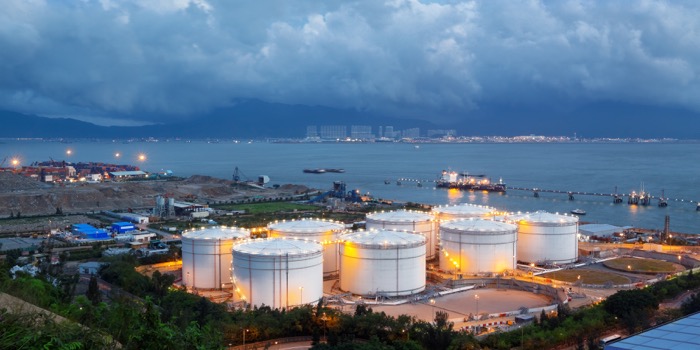The U.S. shale revolution is far from over as two of the largest U.S. energy supermajors, Chevron and ExxonMobil both announced earlier this year they are accelerating their shale production out of the Permian Basin, the centre of the U.S. shale boom.
ExxonMobil’s production in the Permian is expected to exceed 1 million oil-equivalent barrels per day by 2024, an increase of nearly 80 percent from its 2018 investor day presentation.
The size of the company’s resource base in the Permian is approximately 10 billion oil-equivalent barrels and is likely to grow further as analysis and development activities continue.
Neil Chapman, ExxonMobil Senior Vice President, stated: “We will leverage our large, contiguous acreage position, our improved understanding of the resource and the full range of ExxonMobil’s capabilities in executing major projects.”
Meanwhile, Chevron’s strong performance in the Permian Basin is supporting its growth outlook. The company has added almost 7 billion barrels of resource and doubled its portfolio value over the past two years. Permian unconventional net oil-equivalent production is now expected to reach 600,000 bpd by the end of 2020, and 900,000 bpd by the end of 2023.
The company’s unique position in the Permian is “characterised by long-held acreage, zero-to-low royalty on more than 80 percent of our land position, and minimal drilling commitments,” said Jay Johnson, Executive Vice President, Upstream. These attributes together with the deployment of new technologies are driving higher returns, stronger cash flows, and increased value for the company.
Despite these announcements, John Hess stated at a Centre for Strategic and International Studies event in March that “shale is not the next Saudi Arabia.”
He went on to say that even though shale has grown to be a major player to the size of Russia or Saudi Arabia today but going forward its resource base isn’t nearly as strong as Saudi Arabia in terms of being able to sustain the growth in oil supply going forward.
Nevertheless, shale will make up as much as 11 percent of the world’s oil supply by the middle of next decade, up from its current 6 percent, Hess said.
Largest producer
The latest U.S. Energy Information Administration (EIA) short-term energy outlook forecasts that dry natural gas production will average 90.6 billion cubic feet per day (Bcf/d) in 2019, up 7.2 Bcf/d from 2018. It also expects natural gas production will continue to rise in 2020 to an average of 91.8 Bcf/d, making the U.S. the largest producer of natural gas in the world.
According to the International Energy Agency (IEA), the U.S. will drive global oil supply growth over the next five years thanks to the remarkable strength of its shale industry, triggering a rapid transformation of world oil markets.
Large-scale natural gas production from shale began around 2000 when shale gas production became a commercial reality. Since then the U.S. has continued to access significant shale gas resources. The country is also able to respond quickly to price signals by upping production rates. The IEA has noted that the U.S, accounts for 70 percent of the total increase in global capacity to 2024, adding a total of 4 mb/d. This follows spectacular growth of 2.2 mb/d in 2018.
“The second wave of the U.S. shale revolution is coming,” said Dr Fatih Birol, the IEA’s Executive Director. “It will see the United States account for 70 percent of the rise in global oil production and some 75 percent of the expansion in LNG trade over the next five years. This will shake up international oil and gas trade flows, with profound implications for the geopolitics of energy.”
Given that energy consumption is set to expand by at least 25 percent by 2040, the gas industry is teetering on the threshold of an exciting new era. No single energy source can meet this rising level of consumption and the ‘dash for gas’ is set to continue as policy makers and end users seek cleaner energy solutions to satisfy demand.
Gastech 2019
The shale revolution will be a hot topic at this year’s Gastech, the world’s largest exhibition and conference for the global gas, LNG & energy industries. Eight key industry trends have been identified which will drive its conference programme in Houston this September: the new geopolitics of energy; security of demand; downstream evolving; the emerging role of the trading xhouses; future proofing the operating model; implementing a workforce and talent model fit for the future; new commercial constructs to promote investment; greater industry wide collaboration.
In excess of 1,000 extremely high quality abstracts were received during the call for papers campaign earlier this year. After a rigorous selection process by the Gastech Governing Body, over 400 speakers are expected to join the final programme which will be live towards the end of April.
Representing the entire gas, LNG and energy industry, speakers from the up, mid & downstream sectors will share their visions, strategies and innovations driving today and tomorrow’s energy industry. They comprise of a unique mix of ministers and policy makers, C-level executives, research teams, project managers and pioneering innovators and engineers.
“The conference at Gastech is renowned for its quality, breadth and expertise. It’s a celebration of the projects, research, innovations and leadership teams that are successfully driving and progressing the upstream, midstream and downstream value chains for the global gas, LNG and energy industries. We are excited to hear from all those working at the cutting edge of both commercial and technical energy production,” said Jenny Kelly, Gastech Conference Director.
Gastech 2019 will take place from 17 – 19 September at the NRG Center in Houston, Texas.
For more information visit www.gastechevent.com






















